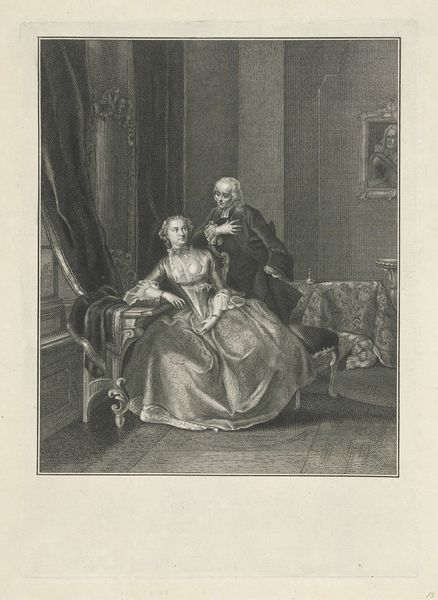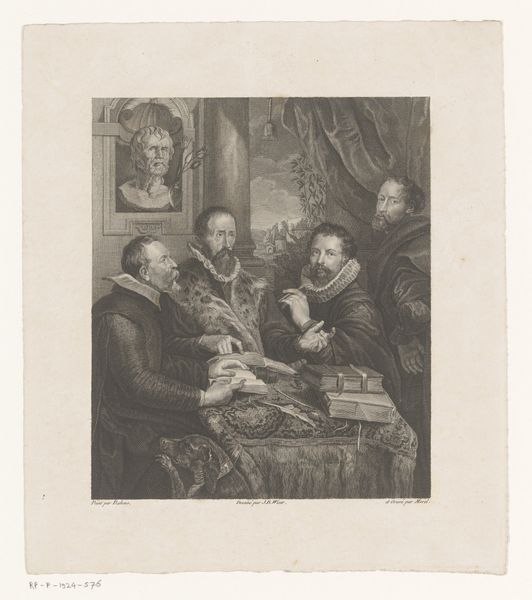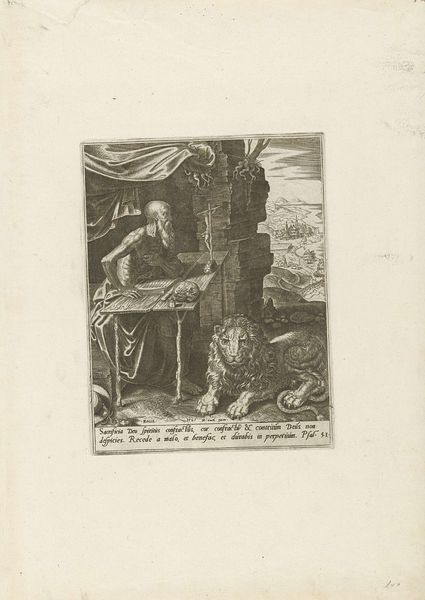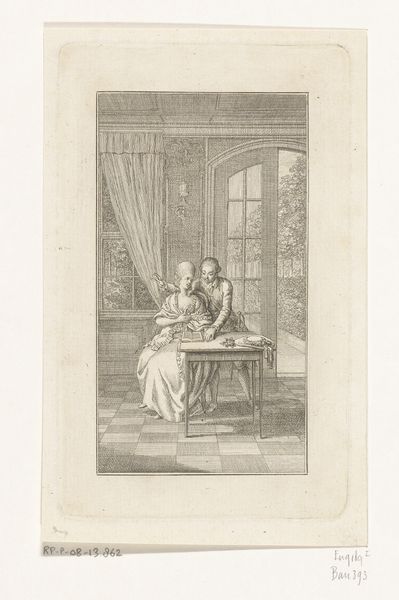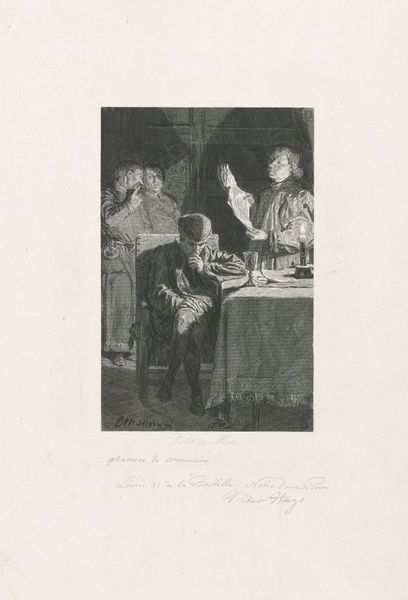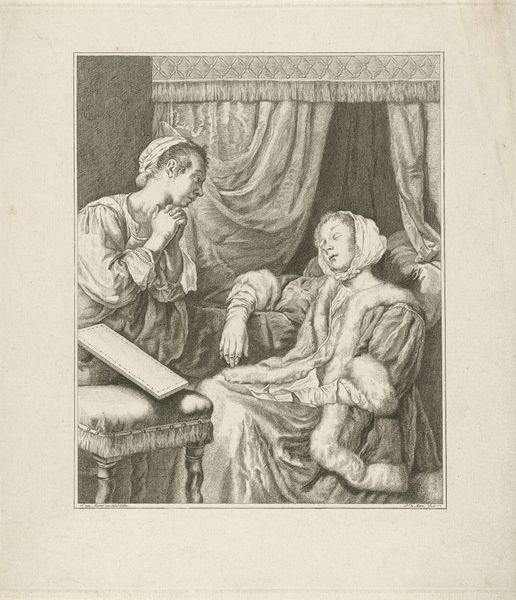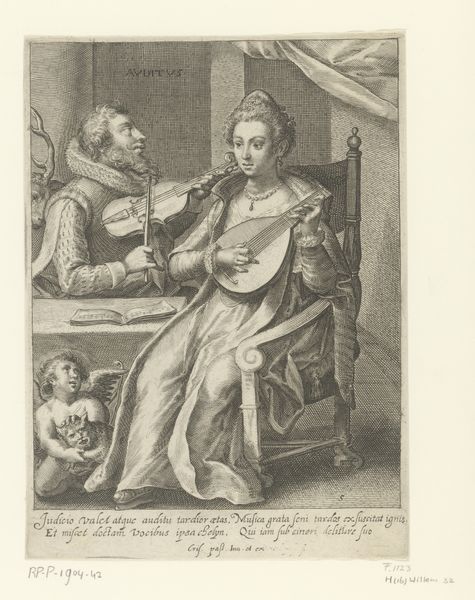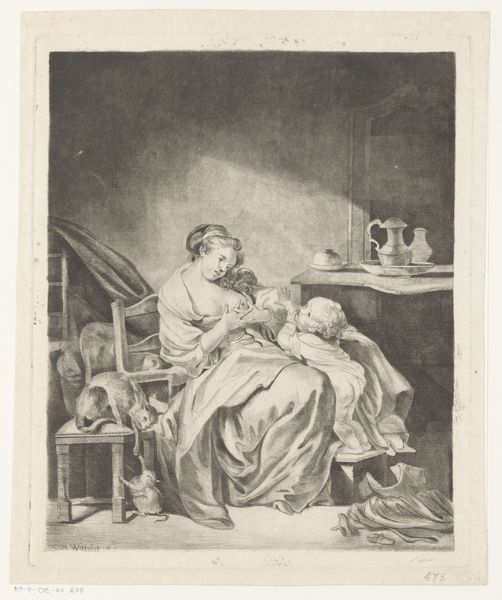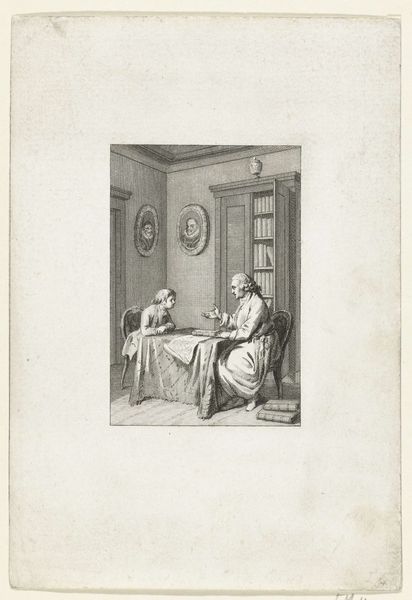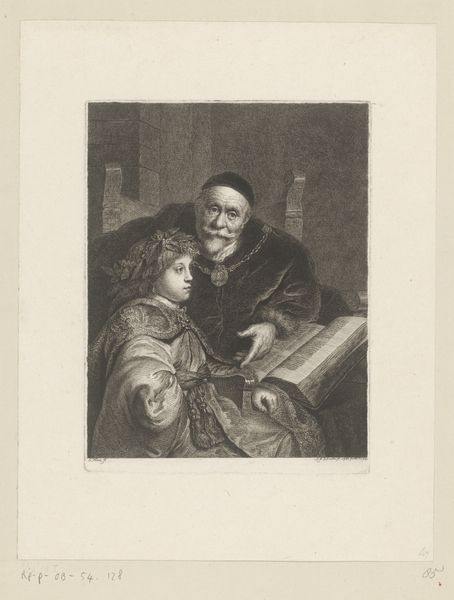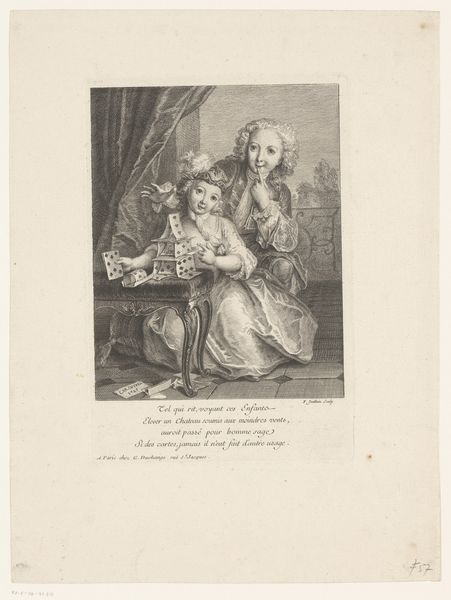
Dimensions: height 198 mm, width 164 mm
Copyright: Rijks Museum: Open Domain
Willem Steelink created this etching, *De virginaalspeelster*, likely in the late 19th or early 20th century, using the intaglio printmaking technique. To make an etching, the artist covers a metal plate with a waxy, acid-resistant substance, then scratches an image into the wax with a needle. When the plate is dipped in acid, the exposed metal is eaten away, creating recessed lines. Ink is then forced into these lines, the surface is wiped clean, and the image is transferred to paper under high pressure. Notice how the etching lines define the forms, creating the textures of the sitter's dress. In its tonal variations, the etching needle captures the soft atmosphere and delicate details, such as the lace collar and the reflective surface of the floor tiles. The process of etching, with its reliance on skilled handwork, provides a unique way to appreciate the layers of labor and skill involved in the artwork's creation. It's a reminder that even in reproduction, the artist’s hand and the materiality of the process remain central.
Comments
No comments
Be the first to comment and join the conversation on the ultimate creative platform.
